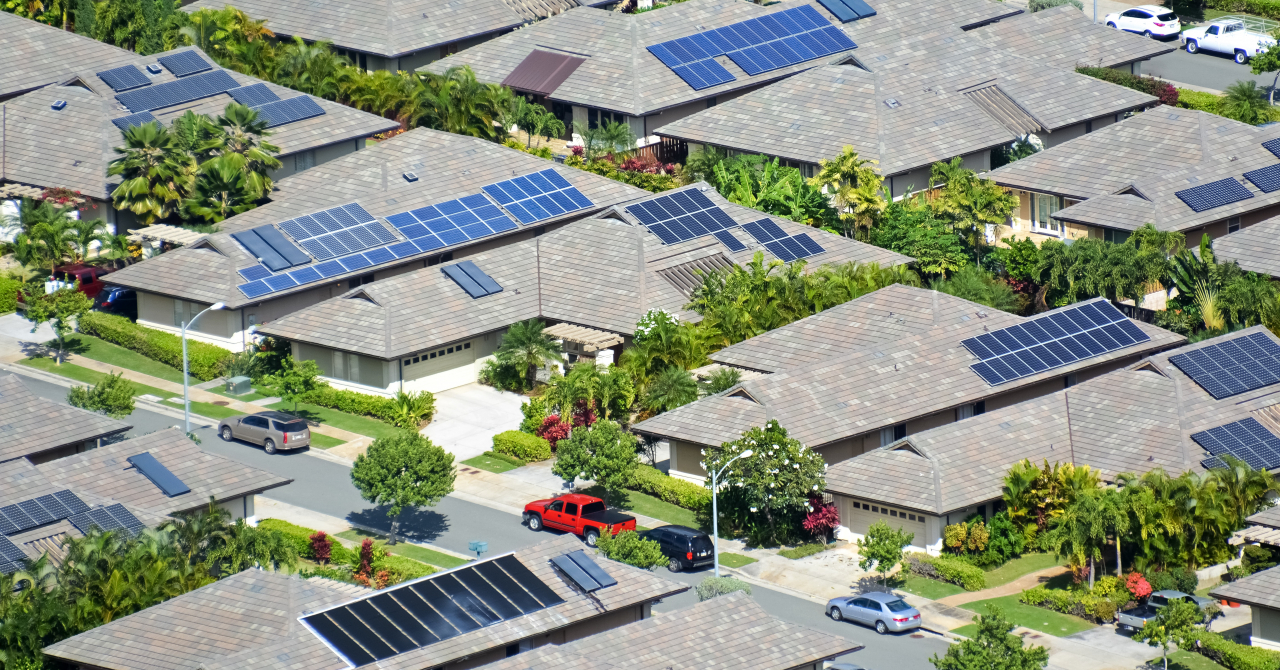What are solar panels
Also known as photovoltaic panels, solar panels are being used in order to capture and convert the light coming from the sun into electricity to power our goods.
Solar panels are a very viable source of renewable energy because of the fact that, at any given time, more than 170.000 terawatts of solar energy reaches Earth, which is more than 10.000 times the energy needs of people around the world.
The first solar panel, used to power up satellites
The first solar panel was invented in 1954 by a company called Bell Laboratories, and the first solar panels were used in order to power space satellites.
Today, solar panels are used to power households around the world, and can prove to be useful especially if an electric system isn't available or reliable in certain locations.
At the same time, they are used even for industrial use, with the Google headquarters in California being powered through solar panels.

How do photovoltaic panels work
The Sun releases energy packs, called photons, and they reach our planet in less than ten minutes, where solar panels capture them and convert them into electric energy that can be used to power electrical devices.
In theory, enough solar energy hits our planet every hour, so that we can satisfy global energy needs for an entire year.
Weather plays a big role in how efficient solar panels are, as well, with clean sunny skies being ideal for harvesting solar power.
Heating with solar energy during the winter
But at the same time, we might be tempted to think that solar panels work better in warm environments, however that is not the case, as colder places around the world can allow solar panels to produce more electric energy, so long as the weather is adequate for this process.
Still, this doesn't necessarily mean that solar panels produce more energy in the Winter, as the sky is cloudier and the Sun generally doesn't show itself for nearly as long as it does during Summer.
Solar panels advantages
Photovoltaic panels can prove to be very useful especially for areas that are off grid, meaning that a certain household doesn't have access to the public electricity system.
This means that a household located in a more remote area can still use electric equipment and home appliances, if it is being fitted with solar panels.
Other solar panels advantages are the fact that they are a great renewable energy source, since they provide clean, green energy, thus reducing carbon emissions for those who choose to use them to power their houses or their businesses.
And solar panels also have the advantage that, as long as they don't break, they produce free energy, and if you have the optimal conditions for producing solar-based energy, you won't have to worry about the electricity bill.
At the same time, there are solar panel systems that allow for heating during winter.
Some users install solar panels to be able to heat their water during the year, but during the months when the Sun isn't as strong, a traditional boiler is recommended.

About solar panels - types of photovoltaic panels
There are multiple types of photovoltaic panels, the most common are monocrystalline and polycrystalline ones.
Monocrystalline solar panels are the oldest type of panels, and they are built from a singular, continuous structure of crystals. These panels can be identified by the solar cells that look like a plain surface of the same color, usually black, according to Prosis energy.
Polycrystalline solar panels differ from the first type due to their production type and they are more technologically advanced. Although the manufacturing process still starts with putting the crystal in a silicone tub, by the time the process is done, it isn't removed, but rather left there to cool down. This way, various edges and cells will be formed in the solar cell.
How much does it cost to implement solar panels
If you opt for the most efficient type of solar panels, which are the monocrystalline ones, the cost per watt is 1 to 1.5 dollars, meaning that a solar system able to produce 6kW of energy will cost you about 6.000 to 9.000 dollars.
Polycrystalline solar panels, however, which are less efficient, cost around 90 cents to 1 dollar per watt, which means that the same 6kW solar system should cost around 5.400 to 6.000 dollars, making it the less pricey option.
Thin-film solar panels cost about the same as the monocrystalline ones, but generally require more space, which makes them more suitable for industrial use.
However, people who want to adopt solar panels as their energy source need to take into account the price of installation, which in the US at least, is 15.000 to 25.000 dollars, depending on location.
As a general rule, the farther the location is from the equator, the more expensive the cost of installation will be.
Solar panels in Romania
In Romania, people who want to fit their households with solar panels need to know that the Administration of the Environment Funding promises to offer 280 million RON to people who want to fit their homes with solar panels.
The program is mostly available for people living in individual homes, with those living in blocks of apartments needing to associate with their neighbors in order to be eligible for the program.
The first two sessions of the program were considered to be failures, as very few of the 12.000 winners got the promised money, but Tanczos Barna, the Ministry of the Environment, promised that the third edition of the program will be a success.
Solar panels can be a great way to become energy independent on a household level and also to reduce carbon emissions.
More and more people start to adopt the use of solar panels, as the main source of electric energy to power their houses and to become greener and let our planet breathe.
 Mihai - Cristian Ioniță
Mihai - Cristian Ioniță












Any thoughts?